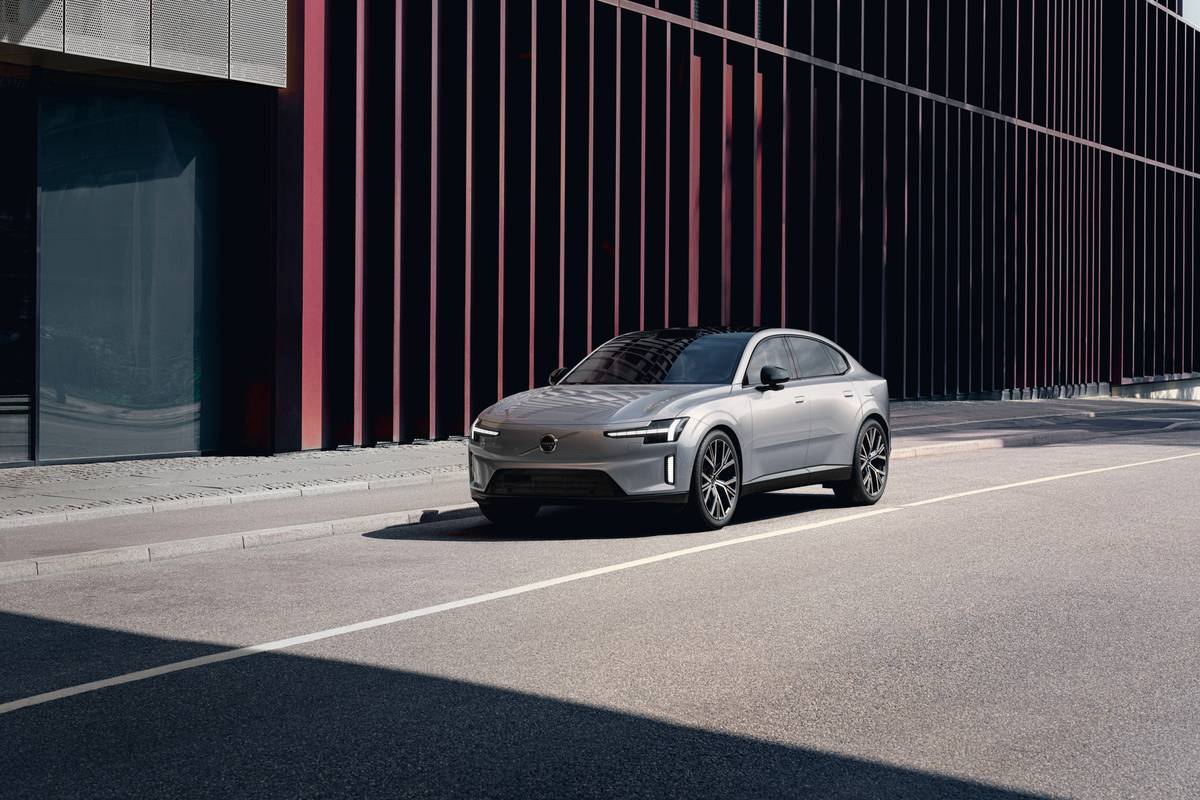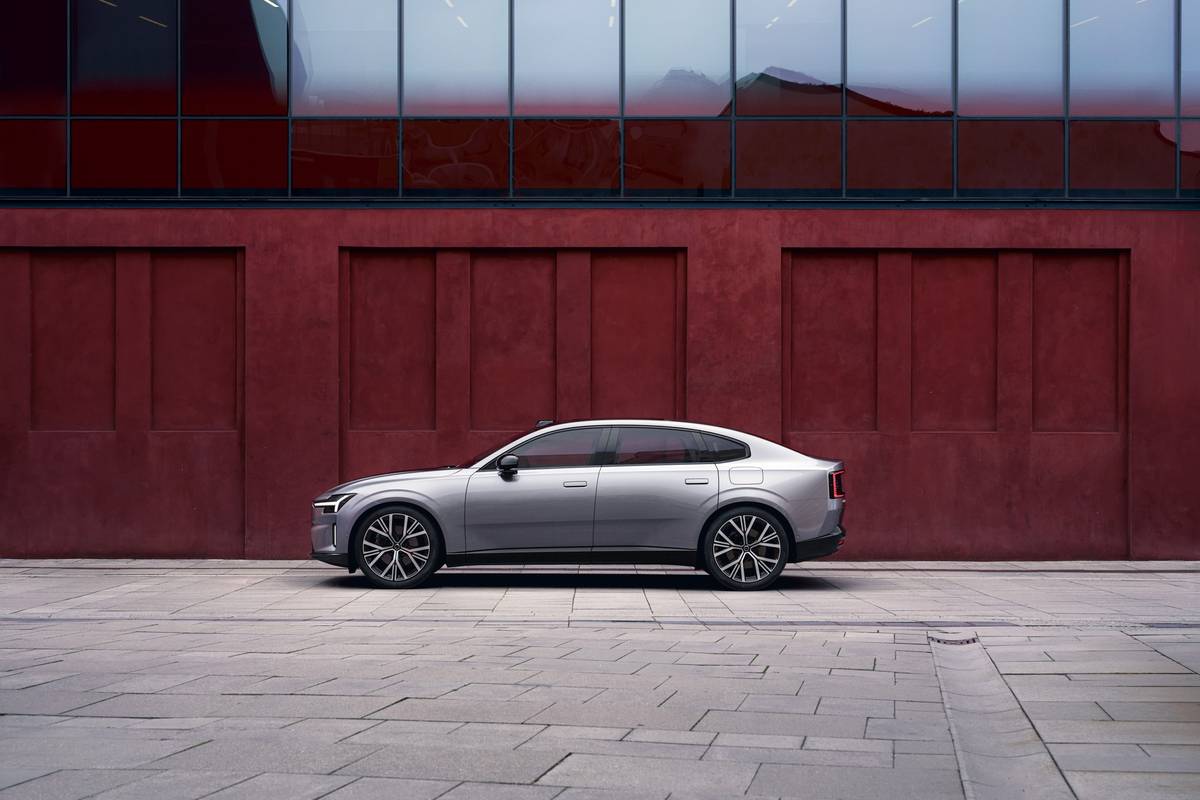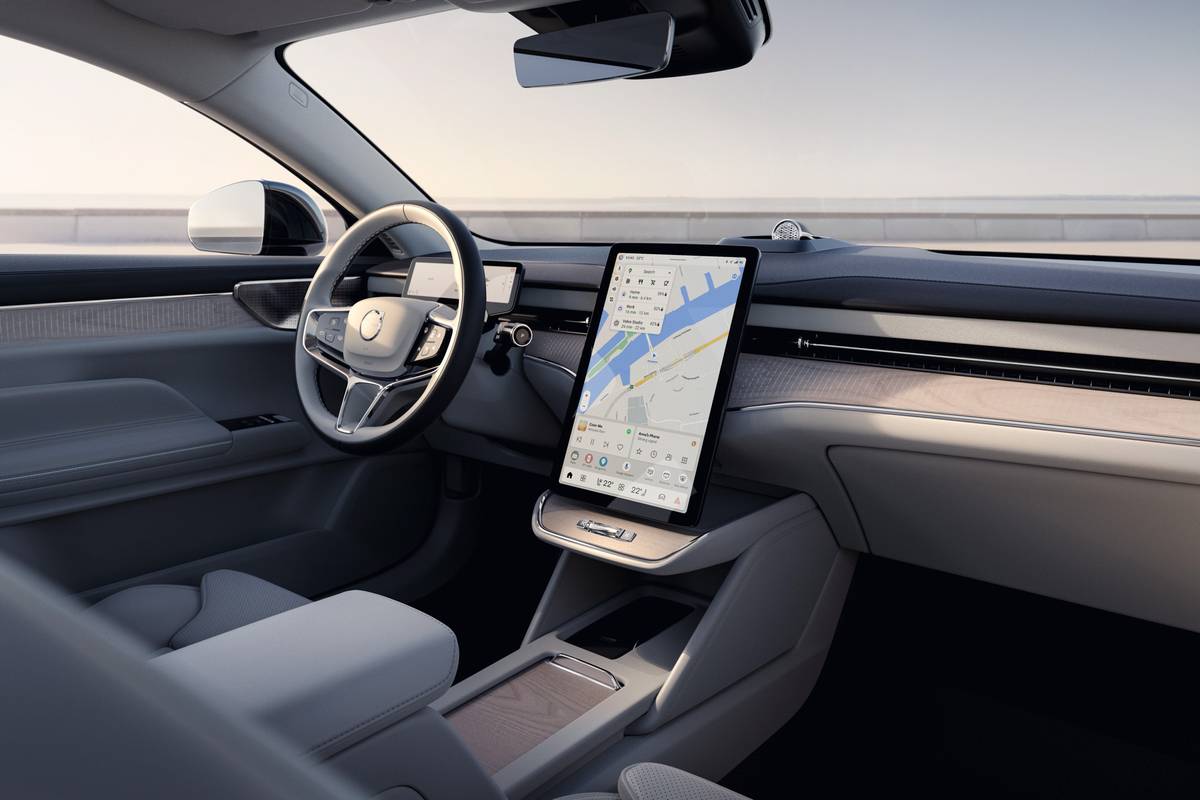Volvo ES90: An All-Electric Sedan With Up to 670 HP

Competes with: BMW i7, Mercedes-EQ EQS Sedan, Tesla Model S
Looks like: A Volvo S90 enduring the Polestar 2’s identity crisis
Powertrains: 329-horsepower electric motor, 88-kilowatt-hour battery, rear-wheel drive; 442 or 670 hp dual electric motors, 102-kWh battery, all-wheel drive
Release date: Later 2025
The all-new ES90 sedan represents a major step in Volvo’s transition to becoming a fully electric brand, it being the marque’s first electric vehicle built around an 800-volt architecture. It also seems to be something of a throwback to the mid-1990s, when the first Toyota RAV4 led to the coining of the term “crossover.” While much of the automotive industry has stopped trying to distinguish between crossovers and SUVs, the ES90 blends elements of cars and SUVs in a way that is hard to define.
Related: Volvo Teases ES90, Its First Electric Sedan
How Does the ES90 Look?










The ES90’s roofline is nearly indistinguishable from that of the gas-burning S90 sedan, but it is 4 inches taller. Standard 20-inch wheels (and available 22s) fill the wheel wells, but the larger expanse of metal between them and the beltline gives the ES90 a look not unlike that of the Polestar 2 (Polestar is a subsidiary of Volvo). The ES90 wears Volvo’s signature Thor’s Hammer LED headlights and C-shaped LED taillights, but it takes a novel approach to the third brake light. Instead of a single lamp mounted in the middle of the rear window, it has two vertical light bars along the sides of the glass.
Stretching 196.9 inches long and 76.5 inches wide, the ES90 is 3.5 inches shorter than the S90 but 2.1 inches wider. Despite a wheelbase 1.6 inches longer, the ES90 has significantly less legroom in the backseat, but front and rear headroom, as well as front legroom, are about the same between the two Volvos. A more significant difference is out back: Whereas the S90 is a traditional sedan, the ES90 is a hatchback, with up to 44.4 cubic feet of cargo volume with the second-row seats folded and 15.8 with them up, per Volvo’s measurements. Under the hood, a small 0.8-cubic-foot frunk is ideal for stashing your charging cable.
What Are the ES90’s Powertrain Specs?
Volvo will offer the ES90 in either a single-motor rear-wheel-drive configuration or with dual motors and all-wheel drive in two levels of output. The base single-motor setup generates 329 horsepower and 354 pounds-feet of torque, good for what Volvo says is a 6.7-second sprint from 0-60 mph. It gets an 88-kilowatt-hour battery pack; U.S. range estimates are not yet available.
Add a motor to the front axle and you get a total output of 442 hp and 494 pounds-feet of torque in the base ES90 Twin Motor, as well as AWD and a larger 102-kWh battery. Volvo will also offer a Twin-Motor Performance variant with 670 hp and 635 pounds-feet, which is said to accelerate from 0-60 in just 3.9 seconds, compared to the basic Twin Motor’s 5.3 seconds. For the U.S. market, Volvo may or may not recommend towing with the ES90, but European models are rated to tug more than 3,500 pounds with RWD and upwards of 4,400 with AWD.
An 800-volt architecture is not only more efficient than a 400-volt system like that of Volvo’s own EX90 SUV and able to produce more power, but it can charge faster, too. Volvo says the ES90 can replenish its battery at up to 350 kilowatts on a DC fast charger, allowing it to add up to 186 miles of range in just 10 minutes and juice from 10% to 80% in as little as 20 minutes.
What Safety and Tech Features Will the ES90 Have?
Not only does the ES90 share its mechanical architecture with the EX90, but its shares the SUV’s core computing tech, too. Volvo describes the ES90 as a “truly software-defined car designed to improve with time.” Over-the-air updates based on data gathered from both vehicles are expected to allow Volvo to refine battery-charge management, powertrain behavior and safety technology more quickly than would be possible based on feedback from either vehicle individually.
Packed with what Volvo says is an “advanced array of sensors,” the ES90 boasts a lidar system, five radar units, seven cameras and 12 ultrasonic sensors. The automaker has not yet specified what safety technologies it will offer on the electric sedan, but we expect the list to rival the best from most any other brand.
Inside, the ES90’s tech suite consists of a head-up display, a 9-inch digital display in the instrument cluster, and a 14.5-inch touchscreen with navigation, wireless Apple CarPlay and Android Auto, Google Built-In and a 360-degree camera system. Volvo will offer three different sound systems, capped by a 25-speaker Bowers & Wilkins stereo with speakers built into the head restraints and ceiling. Other luxury equipment includes four-zone automatic climate control, individually reclining rear seats with ventilation and a standard panoramic moonroof with available electrochromic dimming.
Release Date and Pricing
The Volvo ES90 will go on sale in Europe first, with U.S. sales likely to start later this year. Pricing should start in the low- to mid-$70,000 range.
More From Cars.com:
- How Much Is the 2025 Volvo EX40?
- Is the 2024 Volvo S90 Recharge a Good Car? 5 Pros, 3 Cons
- What Are the Most Reliable Cars and Brands?
- More Volvo News
- Find Your Next Car
Related Video:
Cars.com’s Editorial department is your source for automotive news and reviews. In line with Cars.com’s long-standing ethics policy, editors and reviewers don’t accept gifts or free trips from automakers. The Editorial department is independent of Cars.com’s advertising, sales and sponsored content departments.
Featured stories









